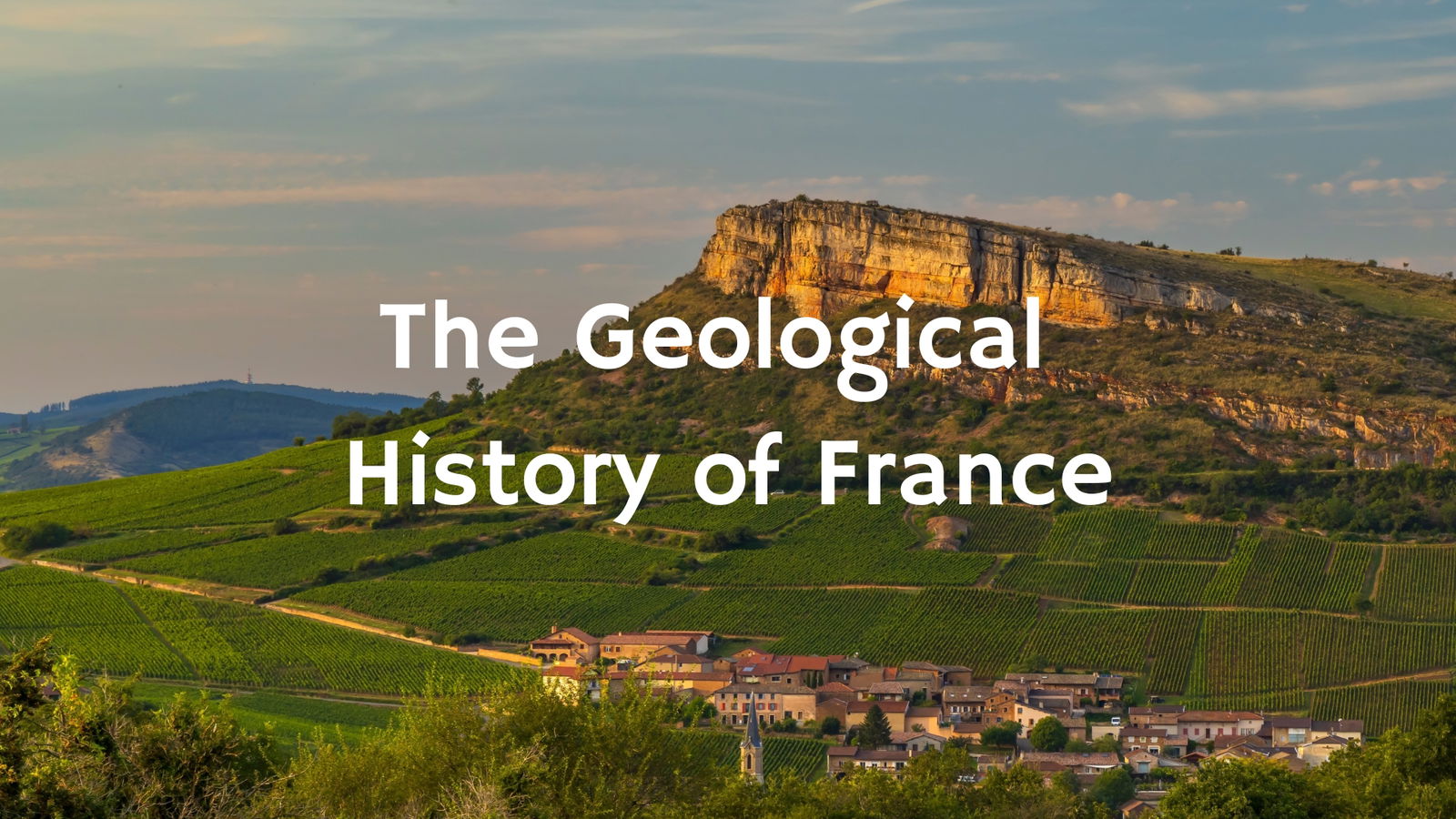
The Geological History of France
Summary:
In order to understand better the specificities that led not only to the present-day landscape but also to the soil and subsoil nature and diversity of the French vineyard, a travel in the past times is necessary.
In order to understand all the key events that occurred during the hundreds of million years of geological history. Being aware that a lagoon, a tidal-influenced shoreline, a broad river, a collision between two tectonic plates, the occurrence of a tropical climate… or ice ages led to a better comprehension of the identity of each French wine growing region.
Presenter: Françoise Vannier
After studying both at university and the French Insitute of Petroleum (IFP, -École Nationale Supérieure du Pétrole et des Moteurs-), I worked for an oil company until 2000, when my family moved to Burgundy. In this renowned wine country, I decided to transfer my geological skills to the study of “terroir”. I successfully completed a one-year diploma in Wine-tasting and Terroir at the University of Burgundy, (Dijon, France), and I now work as a consultant. My new career as a consultant began in 2003, and since March 2015, with Adama, a little company dedicated to vineyard terroirs. Since 2019, I also work for Terroir Invest, a society dedicated to the sale of vineyard estates.
I performed numerous studies along both Côte de Nuits and Côte de Beaune, for the renewing vineyard of Dijon, and for Marsannay, Fixin, Gevrey-Chambertin, Morey-Saint-Denis, Chambolle-Musigny, Pommard, Santenay, Les Maranges, further south for Lugny (Mâconais), or for Coulanges-la-Vineuse to the North (Yonne), but also elsewhere in France, especially with a starting project in the Val de Loire (Sancerre). I have also produced several preliminary technical reports to reclassify certain plots at a higher appellation level (communal for Lugny, 14 premiers crus for Marsannay, and a grand cru for Les Saint-Georges and other AOP). I also work for foreign estates (Chile, Japan, USA -California-, Italy...) in order to characterize the soil and the subsoil, and for terroir expertise.
Sharing my scientific experience, my expertise and my knowledge of the Burgundy vineyard either in French or in English, with students (the University of Burgundy, Burgundy School of Business, Lycée Viticole de Beaune, ISARA…) winegrowers, people working in and around wine, and for wine-lovers (e.g. the “Master class” of Allen Meadows, the “Masters of Wine”, the “Académie du Vin” of Tokyo and Paris, Jasper Morris MW (Berry Bros and Rudd) and for Anthony Hanson (Christie's in London) la Paulée de New York (Daniel Johnes) and so many others…) is a key goal in my work, which has become more of a vocation than a profession. Burgundy needs ambassadors to promote a scientifically grounded in-depth knowledge of terroir. I have given many presentations and organised field trips both in French and in English for the scientific community (International Terroir Congress, 2012), wine professionals, tourists and wine-lover associations.
I have contributed to the geological chapters in Remington Norman’s (UK) book “Grand Cru”, to several articles in “Le Rouge & le Blanc”, “La Revue des Vins de France”, “le Magazine” of Ficofi; I am now an in-house expert for terroir geology in “Bourgogne Aujourd’hui”. I drew the cross-section geological maps in “The wines of Burgundy” by Sylvain Pitiot and Jean-Charles Servant, and I have done some posters for the Saint-Vincent in Saint-Aubin (January 2014). Most of my works are available through the educative website http://monocepage.com. I provide information for CDs or websites for numerous estates, highlighting the characteristics of the terroir, and booklets for some appellations of both Côte de Nuits and Côte de Beaune. I was the subject of a four-page interview paper in the January 2014 issue of Decanter magazine.

